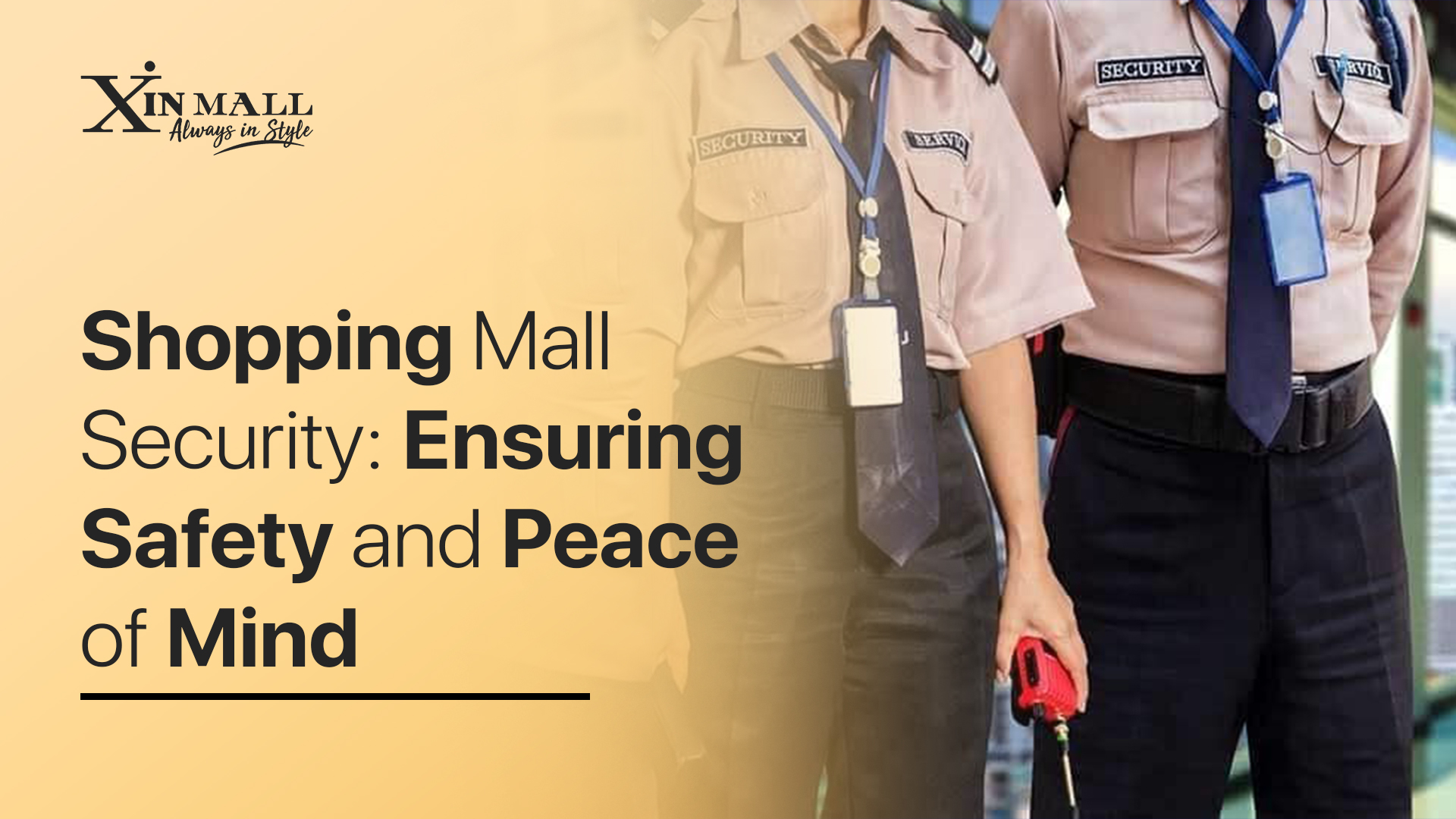Welcome to our in-depth guide on Shopping Mall Security. Shopping malls are bustling hubs of activity, attracting millions of visitors each year. With such high foot traffic, ensuring the safety and security of everyone within the premises becomes paramount. In this article, we will delve into the various aspects of shopping mall security, including the latest technologies, best practices, and strategies employed to create a safe environment. Whether you are a mall owner, manager, or a concerned shopper, this guide will equip you with the knowledge to make informed decisions and promote a secure shopping experience for all.
Shopping Mall Security: An Overview
Shopping mall security encompasses a wide range of measures and protocols designed to protect shoppers, staff, and property from potential threats. It involves the collaboration of trained security personnel, advanced technologies, and efficient management systems to create a comprehensive security infrastructure. Let’s explore the key components of shopping mall security:
1. Security Personnel: The First Line of Defense
Shopping malls employ skilled security personnel to monitor activities, respond to incidents, and ensure a safe environment. These individuals undergo rigorous training to handle emergencies, conduct surveillance, and offer assistance to shoppers when needed.
2. CCTV Surveillance: Vigilant Eyes Everywhere
Closed-circuit television (CCTV) cameras are strategically placed throughout the mall to monitor activity in real-time. This constant surveillance helps deter criminal behavior and provides valuable evidence in case of an incident.
3. Access Control Systems: Regulating Entry and Exit Points
Access control systems, such as turnstiles and electronic gates, restrict unauthorized entry and exit. These systems play a vital role in managing the flow of visitors and preventing unlawful activities.
4. Security Alarms and Sensors: Immediate Alert Mechanisms
Shopping malls are equipped with security alarms and sensors that detect potential threats, such as fire, smoke, or intrusions. These systems trigger immediate alerts, allowing security personnel to respond promptly.
5. Emergency Response Plans: Preparing for the Unexpected
Comprehensive emergency response plans outline procedures to be followed during crises. These plans cover evacuation protocols, medical emergencies, and coordination with external authorities.
Ensuring Shopper Safety
Ensuring the safety of shoppers is of utmost importance for any shopping mall. Here are some measures taken to enhance shopper safety:
6. Well-lit Parking Areas: Illuminating the Path
Maintaining well-lit parking areas reduces the risk of theft, vandalism, and other criminal activities. Adequate lighting not only provides a sense of security but also enhances overall visibility.
7. Secured ATM Booths: Safeguarding Financial Transactions
ATM booths within the mall premises should be secured with CCTV cameras and access control systems to protect shoppers during financial transactions.
8. Visible Signage: Guiding the Way
Clear and visible signage helps shoppers navigate the mall easily. It also includes safety instructions and emergency exit routes.
9. Security Escort Services: Assisting Shoppers
Offering security escort services to shoppers, especially during late hours, provides an added layer of protection and ensures a safe journey to their vehicles.
Embracing Technology for Enhanced Security
Technology plays a pivotal role in modern shopping mall security. Let’s explore some cutting-edge technologies used to bolster security measures:
10. Facial Recognition Systems: Identifying Potential Threats
Facial recognition systems are becoming increasingly popular in malls. These advanced systems can identify potential threats and persons of interest, allowing security personnel to take necessary action.
11. Biometric Access Control: Secure and Convenient Entry
Biometric access control, such as fingerprint scanning or iris recognition, offers secure and convenient entry to restricted areas, ensuring only authorized personnel have access.
12. AI-powered Video Analytics: Intelligent Surveillance
AI-powered video analytics can process vast amounts of CCTV footage in real-time. The technology can detect suspicious behavior, abandoned objects, and even overcrowding to prevent potential incidents.
13. Drones for Surveillance: Eyes in the Sky
Some malls are exploring the use of drones for aerial surveillance. Drones can cover large areas quickly and provide real-time visuals to security teams on the ground.
14. Mobile Applications for Security: Empowering Shoppers
Mobile applications that allow shoppers to connect with mall security offer an extra layer of security. Shoppers can report incidents or request assistance with just a few taps on their smartphones.
Mitigating Cybersecurity Risks
In the digital age, shopping malls are not only vulnerable to physical threats but also cyber threats. Protecting sensitive information and customer data is crucial. Let’s explore cybersecurity measures:
15. Secure Wi-Fi Networks: Preventing Data Breaches
Public Wi-Fi networks within the mall should be secured with encryption and firewall protection to prevent unauthorized access and potential data breaches.
16. Regular Data Backups: Safeguarding Information
Regular data backups are essential to ensure that valuable information can be restored in case of a cyber attack or system failure.
17. Employee Cybersecurity Training: Building Awareness
Mall staff should undergo cybersecurity training to recognize phishing attempts, malicious software, and other online threats.
18. Secure Payment Gateways: Protecting Financial Transactions
Online transactions made within the mall’s website or app must be conducted through secure payment gateways to safeguard customers’ financial data.
Handling Emergencies and Crisis Situations
Despite all preventive measures, emergencies can still occur. Shopping malls must be prepared to handle crisis situations effectively:
19. Evacuation Drills: Practicing for Safety
Regular evacuation drills should be conducted to familiarize shoppers and staff with emergency exit routes and procedures.
20. Collaboration with First Responders: Coordinating for Efficiency
Maintaining strong partnerships with local law enforcement and first responders ensures a coordinated and efficient response to emergencies.
21. Medical Facilities: Quick Access to Medical Aid
Having medical facilities or first aid stations within the mall allows for immediate assistance during medical emergencies.
FAQs
1: What measures can I take to ensure my safety while shopping at a mall?
For your safety at a mall, always be aware of your surroundings and avoid displaying expensive belongings. Park your vehicle in well-lit areas and consider shopping with friends or family, especially during late hours. If you ever feel uncomfortable or notice any suspicious activity, don’t hesitate to seek assistance from mall security.
2: Are shopping malls safe for children?
Yes, shopping malls are generally safe for children. However, it’s crucial to keep a close eye on them and establish a meeting point in case anyone gets separated. Teach children to recognize mall security personnel so they can ask for help if needed.
3: What should I do in case of a fire or other emergency in a shopping mall?
In case of a fire or any other emergency, follow the mall’s evacuation procedures immediately. Head towards the nearest emergency exit and listen to announcements from mall personnel or security. Never use elevators during an emergency, and once outside, move away from the building to a safe location.
4: How can facial recognition systems enhance shopping mall security?
Facial recognition systems can quickly identify potential threats or individuals on a watchlist, enabling security personnel to respond proactively. Additionally, these systems can be integrated with access control, allowing authorized personnel to enter restricted areas seamlessly.
5: Do shopping malls have cybersecurity measures in place?
Yes, reputable shopping malls have robust cybersecurity measures in place to protect customer data and sensitive information. These measures may include secure Wi-Fi networks, data encryption, and employee training on cybersecurity best practices.
6: What is the role of drones in shopping mall security?
Drones provide an aerial view of the mall premises, helping security teams monitor large areas effectively. They can identify potential security breaches, locate lost individuals, and support first responders during emergencies.
Conclusion
Shopping mall security is an ever-evolving field that combines technology, trained personnel, and strategic planning to ensure the safety of everyone within the premises. By implementing the best practices and staying updated with the latest security technologies, shopping malls can continue to provide a safe and enjoyable shopping experience for all visitors.
Remember, safety is a collective responsibility, and each individual plays a part in promoting a secure environment. So, the next time you visit a shopping mall, take a moment to appreciate the efforts put into making your shopping experience safe and pleasant.

